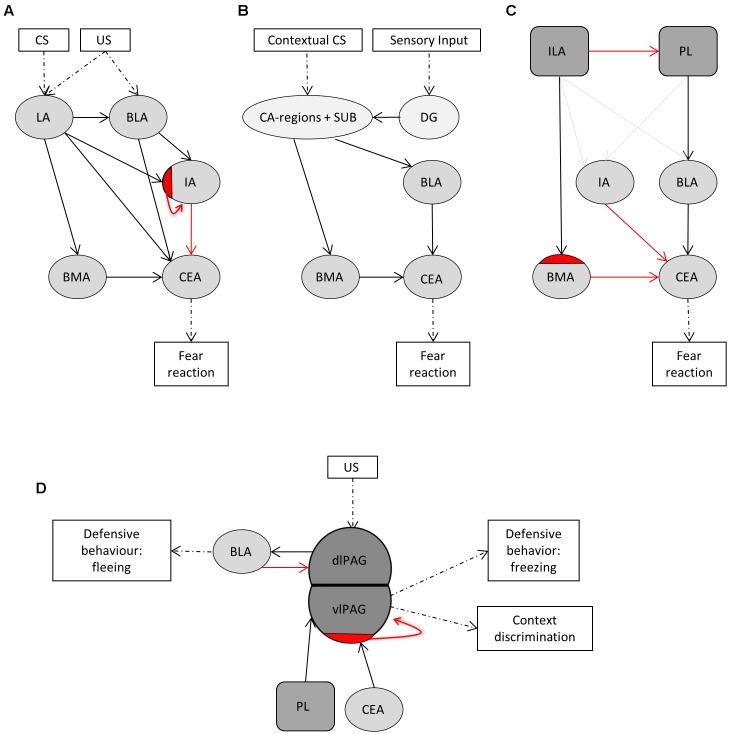FIGURE 1.
The central fear circuitry consists of subnuclei of the amygdala, the hippocampus, the medial prefrontal cortex and the efferent periaqueductal gray. (A) The lateral amygdala (LA) forms the main input and the central amygdala (CEA) the main output region of the amygdala. Integration of unconditioned (US) and conditioned (CS) stimuli takes place in the LA. From there on, fear signals are transferred via the basolateral amygdalar nucleus (BLA), basomedial amygdalar nucleus (BMA) and intercalated region (IA) to the CEA. Projections from the LA go to an inhibitory subdivision of the IA to disinhibit the CEA. (B) Information about the context of a fearful situation is transferred via hippocampal CA-regions and subiculum (SUB) to the BLA and to BMA and from thereon further to the CEA. The dentate gyrus (DG) was additionally included, as many sensory inputs travel via the DG before reaching the CA-regions. (C) The ventromedial prefrontal cortex (ILA) and the dorsomedial prefrontal cortex (PL) are important in the top-down control of fear and exert opposing effects. Activation of the PL leads to anxiogenesis via projections to the BLA, and, to a lesser extent, to the IA. Conversely, ILA activation leads to anxiolysis mainly via projections to inhibitory interneurons in the BMA, and via smaller projections to the IA and BLA. (D) The PAG is classically viewed as major output structure of the fear reaction, driving fear-related defensive behavior. Stimulation of the dorsolateral PAG serves as effective unconditioned stimulus for fear conditioning, and projections to the BLA evoke motor activity bursts that underlies fleeing behavior. The ventrolateral PAG receives inhibitory projections from the CEA, which disinhibits excitatory PAG neurons that project to motor nuclei to establish freezing behavior. The ventrolateral PAG additionally receives input from the PL, and these neurons control contextual fear discrimination. Dashed arrows indicate where stimuli enter or leave the fear circuitry. Solid black arrows reflect big excitatory while solid gray arrows reflect small excitatory projections. Solid red arrows indicate inhibitory projections and red half-moons inhibitory cell populations within a given subnucleus.

